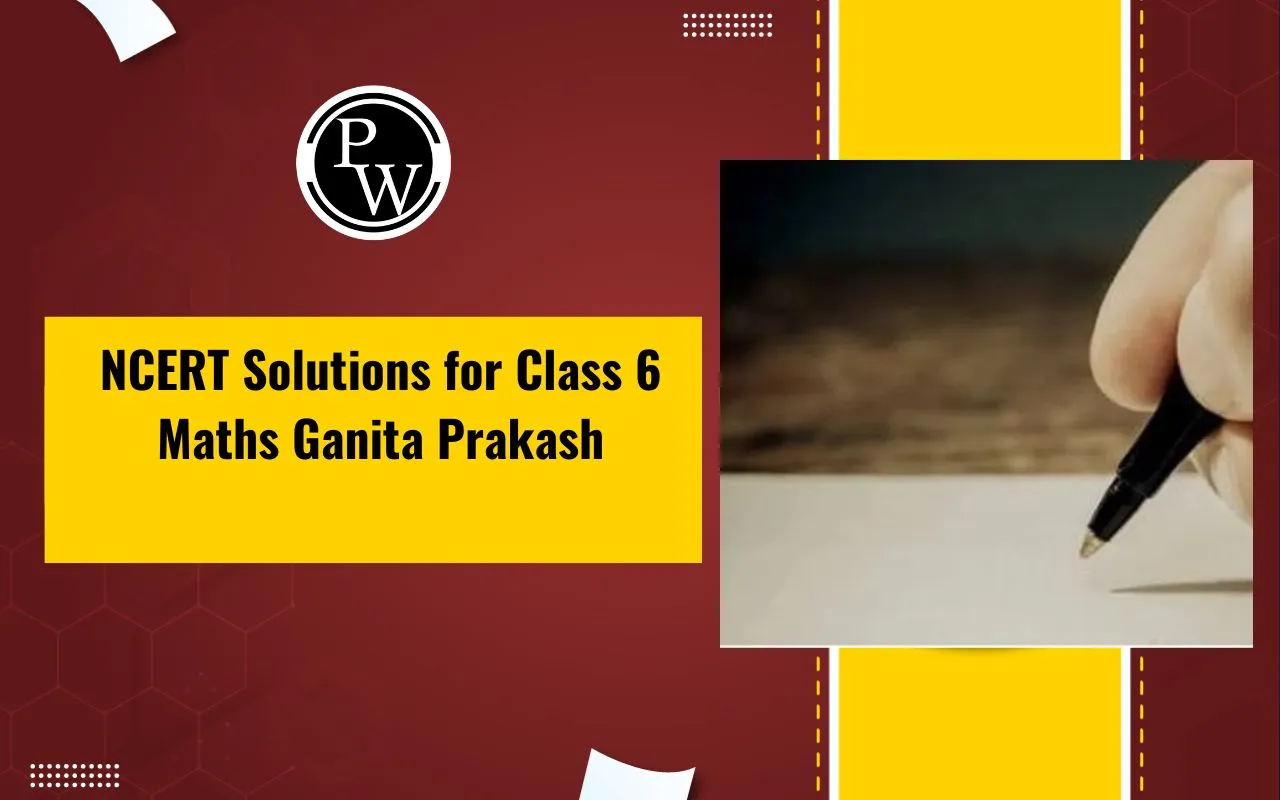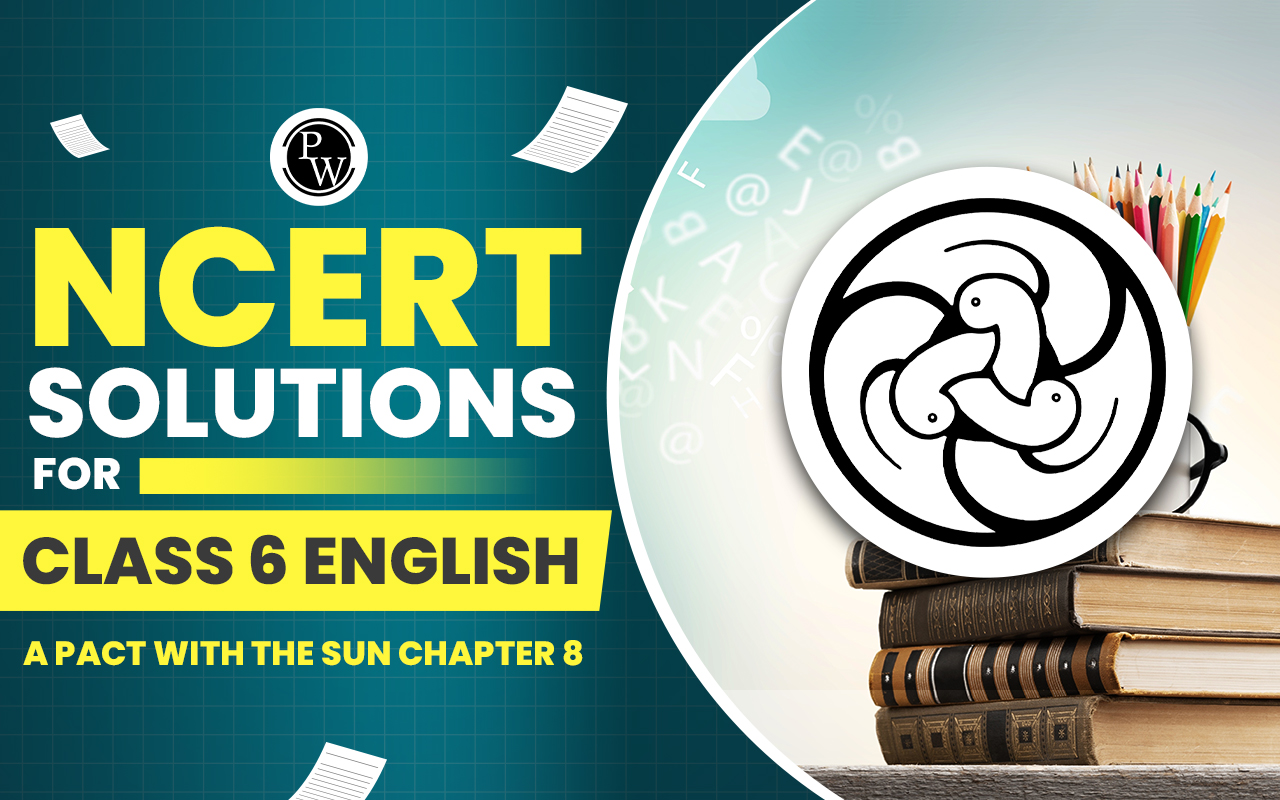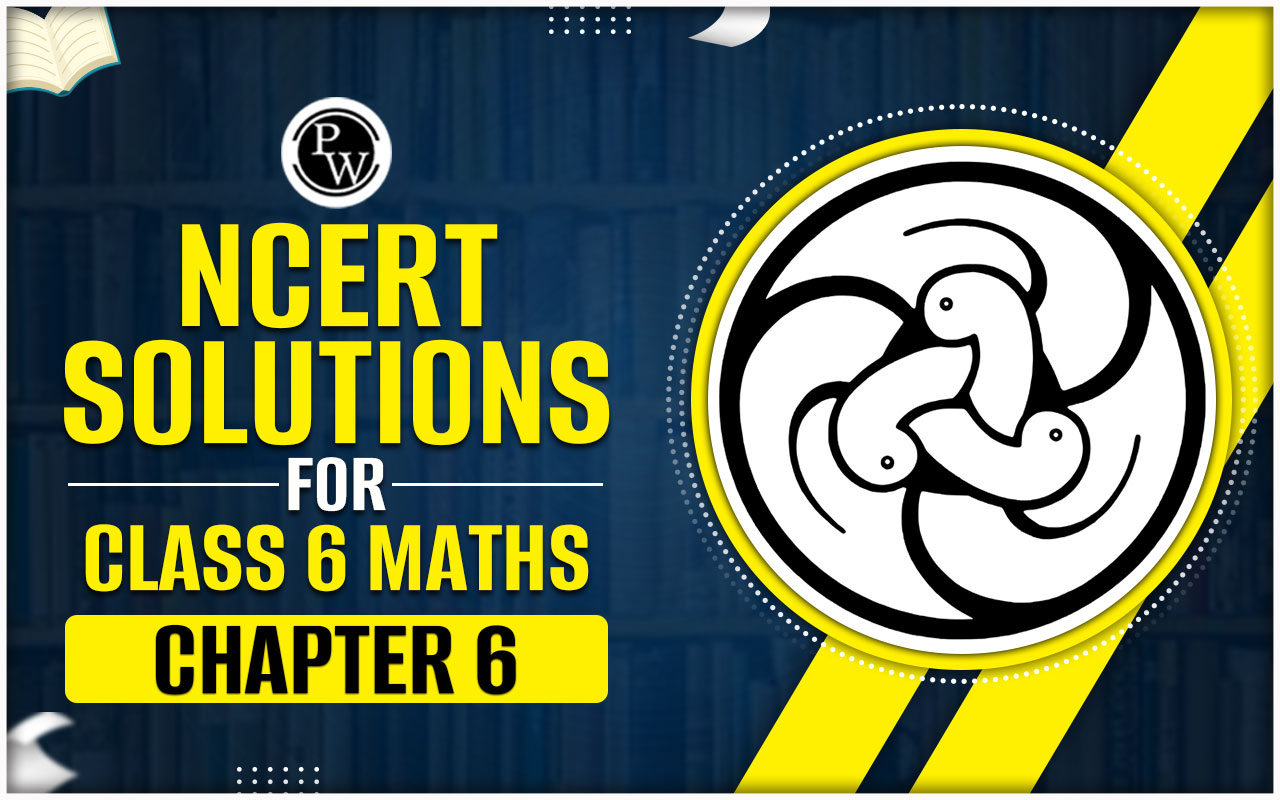
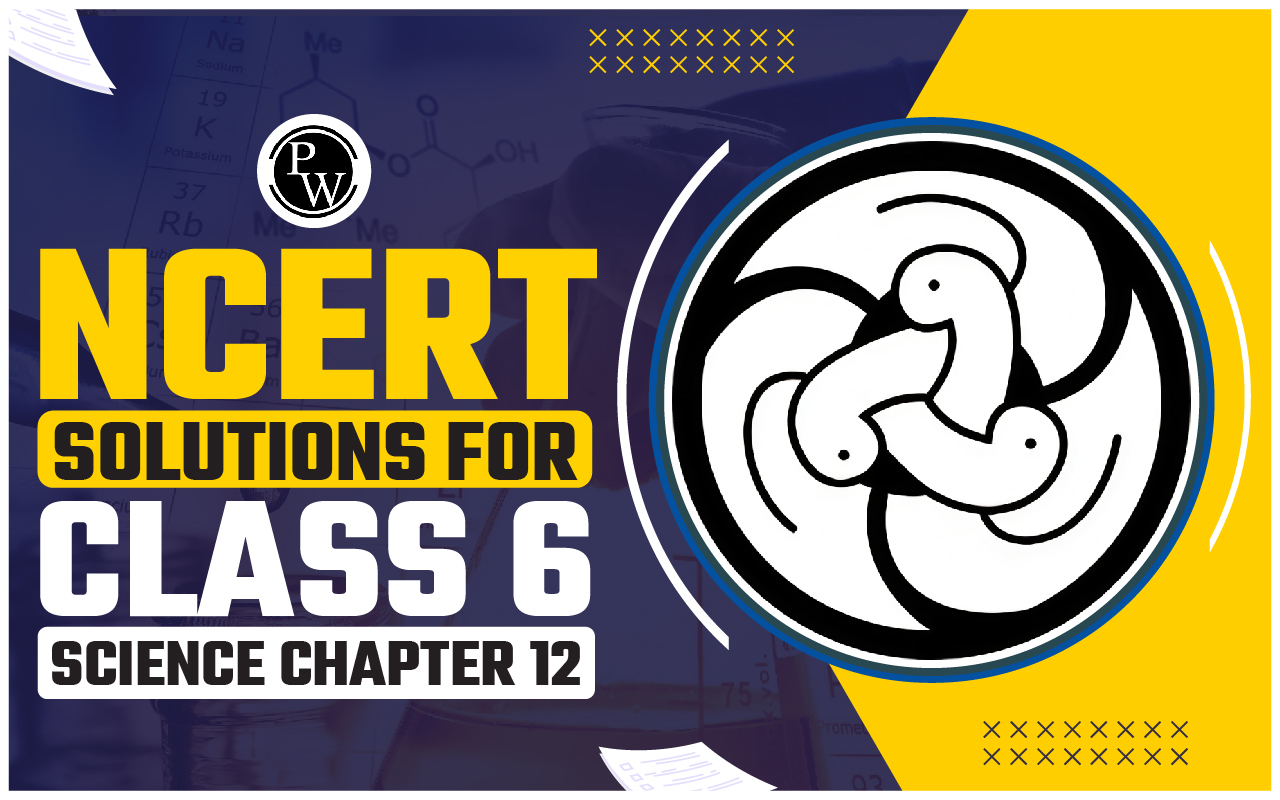
NCERT Solutions For Class 6 Science Chapter 12
NCERT Solutions For Class 6 Science Chapter 12: NCERT Solutions for Class 6 Science Chapter 12 on Electricity and Circuits provides answers and explanations for filling in the blanks, true or false, circuit diagrams, and descriptive questions. These solutions assist in grasping the concepts covered in the chapter. The chapter addresses topics such as electric cells, bulbs, circuits, switches, conductors, insulators, and offers examples of both. The solutions of Chapter 12 in NCERT presents accurate solutions, aiding students in efficiently completing homework and preparing for exams. It ensures comprehensive coverage of all concepts in the chapter. Class 6 is a crucial stage, forming the foundation for future academic years. Hence, students aiming for good Science scores should diligently practice CBSE Sample Papers.NCERT Solutions for Class 6 Science Chapter 1
NCERT Solutions For Class 6 Science Chapter 12 Overview
The NCERT Solutions for Chapter 12 of Class 6 Science provide a thorough exploration of electricity and circuits. This chapter elucidates the principles of electricity, various electrical devices, electrical circuits, conductors, switches, insulators, and more. Comprising a total of five sub-topics, the chapter initiates with a general introduction to the mentioned concepts, progressing to explain electric cells, circuits, switches, and related topics. The chapter summary and technical terms provided at the end contribute to a comprehensive understanding of the concepts. NCERT Solutions for Class 6 Science Chapter 12 offer a concise solution for student comprehension. These solutions are accessible online in PDF format, allowing students to download them without any charges.
NCERT Solutions for Class 6 Science Chapter 2
NCERT Solutions For Class 6 Science Chapter 12 Electricity And Circuits
NCERT Solutions for Class 6 Science Chapter 12 Electricity And Circuits are provided here with simple step-by-step explanations. 1. Fill in the blanks:(i) A device that is used to break an electric circuit is called ---.
(ii) An electric cell has --------- terminals.
Ans:
(i) A device that is used to break an electric circuit is called a switch. (ii) An electric cell has two terminals. 2. Mark ‘True’ or ‘False’ for the following statements: ( a) Electric current can flow through metal.(b) Instead of metal wires, a jute string can be used to make a circuit.
(c) Electric current can pass through a sheet of thermocol.
Ans:
(a) True (b) False (c) FalseNCERT Solutions for Class 6 Science Chapter 3
3. Explain why the bulb would not glow in the arrangement shown in Fig. Ans:
The bulb will not light since the circuit is broken due to the insulator in the middle.
Ans:
The bulb will not light since the circuit is broken due to the insulator in the middle.
NCERT Solutions For Class 6 Science Chapter 12 PDF Download
4. Complete the drawing shown in Fig, to indicate where the free ends of the two wires should be joined to make the bulb glow.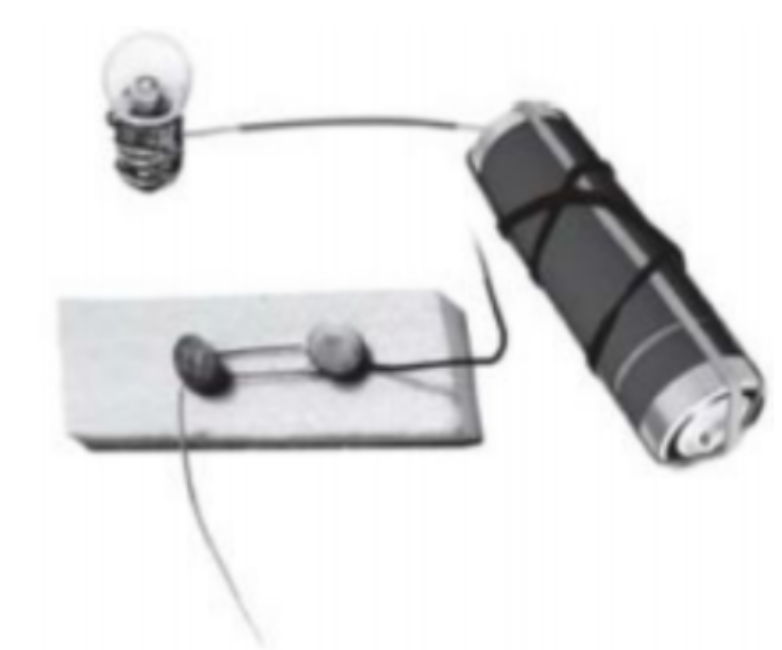
Ans :

NCERT Solutions for Class 6 Science Chapter 13
5. What is the purpose of using an electric switch? Name some electrical gadgets that have switches built into them. Ans: A switch is a basic device that completes or breaks a circuit in an electric circuit. Electric fans, electric irons, toasters, and other electric appliances need switches. 6. Would the bulb glow after completing the circuit shown in Fig in the Q.4 if instead of a safety pin we use an eraser? Ans: No, because the eraser is an insulator. 7. Would the bulb glow in the circuit shown in Fig. in Question 04? Ans: No, the bulb will not glow. 8. Using the “conduction tester” on an object it was found that the bulb begins to glow. Is that objected to by a conductor or an insulator? Explain. Ans: Because electricity can only pass through a conductor and not through an insulator, that object is called a conductor. The bulb will not glow unless the thing is a conductor.NCERT Solutions For Class 6 Science Chapter 4
9. Why should an electrician use rubber gloves while repairing an electric switch at your home? Ans: Rubber gloves are used as insulators. This prevents the electrician from being electrocuted. That is why, when repairing an electric switch, an electrician wears rubber gloves. 10. The handles of the tools like screwdrivers and pliers used by electricians for repair work usually have plastic or rubber covers on them. Can you explain why? Ans: Plastic and rubber are both poor electrical conductors. As a result, they protect from electric shock.NCERT Solutions for Class 6 Science Chapter 5
NCERT Solutions for Class 6 Science Chapter 12 Topic Wise Explanation
Chapter 12 of Class 6 Science is divided into 5 sections. Here's a breakdown of each topic. Introduction The 12th Science class for grade 6 starts by introducing the concept of electricity and circuits. It begins by highlighting the importance of electricity in our daily lives and the devices that rely on it. Electric Cell: This part of Class 6 Science Chapter 12 delves into the electric cell concept. It explains the working of various electric cells, their structure, and the warning signs on them. Once students grasp how these cells work, they can proceed to experiments. There are two do-it-yourself activities for students to try at home. The first involves understanding the structure of a torch bulb. Students can take out the bulb, examine its various parts, and observe how the filament produces light with the help of an electric cell.NCERT Solutions For Class 6 Science Chapter 16
Bulb Connected to an Electric Cell: In the subsequent section of electricity and circuits in Class 6, students learn how to light a torch bulb using an electric cell. This part provides a step-by-step guide on successfully carrying out this process. Students can take two electric wires of different colors, strip off their plastic covering to expose their metal cores, and then connect one end of the exposed metal part to the cell and the other end to the bulb. They can use an electrician's tape to secure them. Students can experiment by switching the wires and note down the results for later discussion.NCERT Solutions for Class 6 Science Chapter 8
Electric Circuit: As the name suggests, this chapter in NCERT Class 6 Science Chapter 12 offers a comprehensive understanding of electrical circuits. Building on the previous experiment, students already learned the basics of an electrical circuit when they lit a torch bulb with an electric cell. In the prior experiment, they established an electrical circuit by connecting the electric cell to a torch bulb. They created a clear path for electricity to flow between two terminals of electric cells. Class 6 Science Chapter 12 also provides a do-it-yourself project to enhance students' understanding of a basic electrical circuit.NCERT Solutions For Class 6 Science Chapter 15
Electric Switch: Class 6 Science Chapter 12 then explains the concept of an electric switch. Electric switches are crucial in an electrical circuit as they regulate the flow of electricity within that circuit. This section includes an activity that students can do to deepen their understanding of electric switches. The activity involves using household materials like ThermoCol or a wooden board, paper clips, safety pins, etc., to create a circuit and an electric switch.NCERT Solutions for Class 6 Science Chapter 14
Electric Conductors and Insulators: Electricity and Circuits Class 6 NCERT Solutions cover various conductors and insulators. This topic starts with an example from the previous experiment, discussing how metal serves as a good conductor of electricity. Following that, NCERT Solutions for Class 6 Science Chapter 12 progress to a detailed discussion about different objects and their ability to conduct electricity. Afterward, students learn about insulators, how they work, and their significance in an electrical circuit.NCERT Solutions for Class 6 Science Chapter 11
Benefits of NCERT Solutions for Class 6 Science Chapter 12
NCERT Solutions for Class 6 Science Chapter 12 offer numerous benefits to students, aiding in their understanding of the subject matter. Here are some detailed benefits: 1. Comprehensive Coverage : The solutions provide a comprehensive coverage of the topics included in Chapter 12 of Class 6 Science, ensuring that students grasp all essential concepts related to electricity and circuits. 2. Clarity and Explanation: The solutions offer clear and detailed explanations for each question and concept. This clarity helps students in understanding the underlying principles, making the learning process more effective. 3. Structured Format: NCERT Solutions for Class 6 Science Chapter 12 are presented in a structured format, following the sequence of topics in the textbook. This structure aids in organized learning and helps students navigate through the content systematically. 4. Guidance in Various Question Types: The solutions cover a variety of question types, including fill in the blanks, true or false, circuit diagrams, and descriptive questions. This variety prepares students for different question formats they might encounter in exams.NCERT Solutions For Class 6 Science Chapter 7
5. Exam Preparation: The solutions serve as an invaluable resource for exam preparation. Students can use them to practice and assess their knowledge, ensuring they are well-prepared for assessments and examinations. 6. Time-Saving: The solutions are presented in a concise and clear manner, saving students time that might be otherwise spent searching for explanations. This efficiency is crucial, especially when students are revising or completing assignments. 7. Free of Cost: NCERT Solutions for Class 6 Science Chapter 12 are available free of charge. This accessibility ensures that financial constraints do not hinder students from accessing crucial study materials. 8. Consistency with NCERT Curriculum: Since the solutions are based on the NCERT curriculum, they align perfectly with the content taught in Class 6 Science. This consistency ensures that students focus on the relevant material outlined by the educational board.NCERT Solutions For Class 6 Science Chapter 9
How to Prepare With NCERT Solutions for Class 6 Science Chapter 12
Here's a detailed guide on how to effectively prepare for NCERT Solutions for Class 6 Science Chapter 12 using these solutions: 1. Read the Chapter Thoroughly: Before diving into the solutions, read Chapter 12 of Class 6 Science thoroughly. Understand the basic concepts related to electricity and circuits. Take note of key terms, definitions, and examples provided in the chapter. 2. Take Notes: While reading the chapter, take concise notes summarizing important points. These notes can serve as quick revision materials later on. 3. Refer to Solutions Step by Step: Use the solutions step by step. For each question, try to solve it on your own first. Afterward, refer to the solutions to check your answers and understand the correct approach. 4. Practice Regularly: Regular practice is key to mastering any subject. Set aside dedicated time for practicing questions from NCERT Solutions for Class 6 Science Chapter 12. Consistent practice enhances retention and understanding. 5. Collaborate with Peers: Discussing concepts and problem-solving approaches with classmates can provide fresh perspectives and enhance your understanding. Collaborative learning can be beneficial in grasping difficult concepts.NCERT Solutions For Class 6 Science Chapter 6
6. Stay Consistent: Consistency is crucial for effective preparation. Allocate regular study sessions, avoid cramming, and stay committed to your study plan. 7. Review and Revise: Periodically review the entire chapter and revisit the solutions. This helps reinforce what you've learned and ensures better retention. Create a revision schedule to cover the chapter multiple times before exams. 8. Focus on Conceptual Understanding: Instead of memorizing answers, focus on understanding the underlying concepts. This approach ensures a more profound and sustainable grasp of the subject matter. 9. Solve Previous Years' Questions: If available, solve previous years' questions from Class 6 Science exams. This practice helps you become familiar with the question patterns and enhances your problem-solving skills. 10. Seek Clarification for Doubts: If you encounter difficulties or have doubts about any concept, seek clarification from your teacher, classmates, or online resources. Understanding the basics is crucial for advanced learning.NCERT Solutions for Class 6 Science Chapter 12 FAQs
What is a fused bulb in Class 6?
What is a torch in Class 6?
Define electric current in Class 6 in a short answer.
What is a switch in Class 6?
Explain an electric cell in Class 6.








